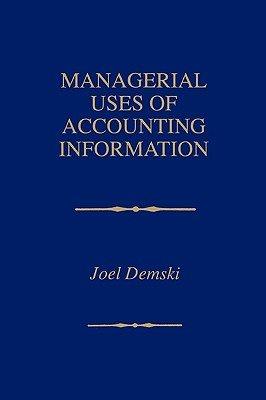variable versus tuli eosting, inforrnation eontent Consider a single produet firm. The known eonstant selling priee for
Question:
variable versus tuli eosting, inforrnation eontent Consider a single produet firm. The known eonstant selling priee for its product is 100 per unit. The firm's known eost curve is given by TC = 100,000 + 15q + E.
Here, q denotes the total quantity produeed in some partieular period and E is, tautologieally, an error terrn. Think about this in the following way: we estimate the eost curve as eonsisting of fixed eost equaI to 100,000 per period and variabIe eost equal to 15 per unit produeed. Things may not go exaetly as planned, so we add a fudge terrn of E. In addition, to keep things simple, we assume that Te is paid in eash eaeh and every period.
The firrn uses standard eosting. Under standard, full eosting it assumes a norrnal volume of q = 2,000 and thus works with a standard product eost of 65 per unit. Conversely, under standard, variable eosting it works with a standard product eost of 15 per unit.
a] Suppose the following data are observed.
prd 1 prd2 prd3 beginning inventory (at 65 per unit) 0 32,500 19,500 eash inflow (revenue) 150,000 120,000 210,000 eash outflow (TC) 150,000 109,000 120,000 ending inventory (at 65 per unit) 32,500 19,500 13,000 revenue 150,000 120,000 210,000 expense (standard, full eosting) 117,500 122,000 126,500 net income 32,500 (2,000) 83,500 Observe that all of these data would be avaiIabIe from the finaneiaIs. The inventory balanees are available on the balanee sheet, the eash flow data are available on the funds statement, and so on. Given that we aIso know the way the measurement system works, in terrns of the 65 inventory valuation datum and how expense is measured, we know a great deal here. In faet the only things we do not know are the production quantity, sale s quantity, and error terrn in eaeh of the three periods. But we can figure these out. Deterrnine, using the above data, the produetion quantity, sales quantity, and error terrn for eaeh of the three periods.
b] Now let's do the same thing with a variable eost income measurement system.
The data available would now be as follows:
prd 1 prd2 prd3 beginning inventory (at 15 per unit) 0 7,500 4,500 cash inflow (revenue) 150,000 120,000 210,000 cash outflow (TC) 150,000 109,000 120,000 ending inventory (at 15 per unit) 7,500 4,500 3,000 revenue 150,000 120,000 210,000 expense (standard, variable eosting) 142,500 112,000 121,500 netincome 7,500 8,000 88,500 Detennine, using only the data in this second panel, the produetion quantity, sales quantity, and error tenn for eaeh 0 f the three periods.
e] Finally, refleet baek on this exercise. First, why do the periodie ineome measures differ between the two systems? Second, why are you able with either system to discern exaetly the same thing? Third, whieh measurement scheme is superior?AppendixLO1
Step by Step Answer:






